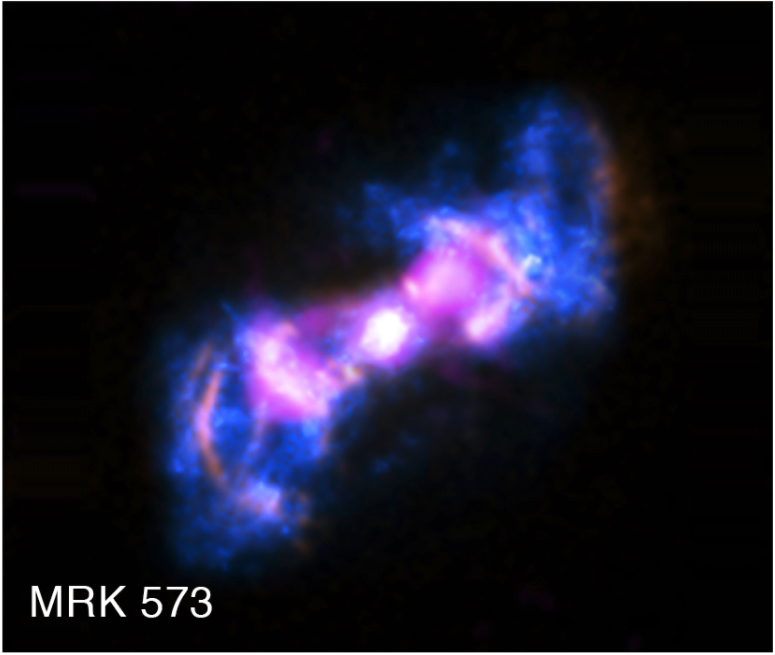Daily Image
10-03-2022Colloquium: AGN-Galaxy Interaction: Studying Highly Absorbed Compton Thick AGNs with Chandra’s high-resolution X-ray spectral imaging
| Submitter: | Giuseppina Fabbiano |
| Description: | Imaging X-ray spectroscopy of nearby AGNs, mostly with Chandra, has shown that extended soft (<2.5 keV) emission-line dominated X-ray biconical structures, of kiloparsec scale, are widespread in highly absorbed Compton Thick (CT) AGNs. The X-ray emission is complex, requiring both photoionized and shock-ionized gas. It originates from high ionization regions and is surrounded by cocoons of low ionization narrow line emission regions (LINERS). Bicone ~3-6 keV continuum and 6.4 keV Fe K-alpha emission has been detected, contrary to the standard AGN model expectation that would confine this hard emission to the pc-size nuclear absorbing torus. Extended emission in the cross-cone direction, also requires modifications to the AGN standard model. A porous torus, with a significant fraction of escaping AGN continuum, and/or jet interaction with ISM creating a “blow-back” towards the nuclear region seem to be required. Here we discuss these results and their implications for both the AGN model and our understanding of AGN feedback. The finding of hot and highly photoionized gas on 10s parsecs to several kiloparsec scales demonstrates that all three feedback mechanisms are at work: radiation affects the inner molecular clouds of the host on a ~1 kpc scale; shocks of relativistic jets with the host ISM a few kpc from the central AGN; and photoionization of the ISM via winds on scales from pc to multiple kpc. These results demonstrate that X-rays are needed to develop a complete picture of AGN/host interaction along with radio continuum, mm and sub-mm molecular line emission, and optical/near-IR emission lines. |
| Copyright: | Giuseppina Fabbiano |
| Tweet |  |
